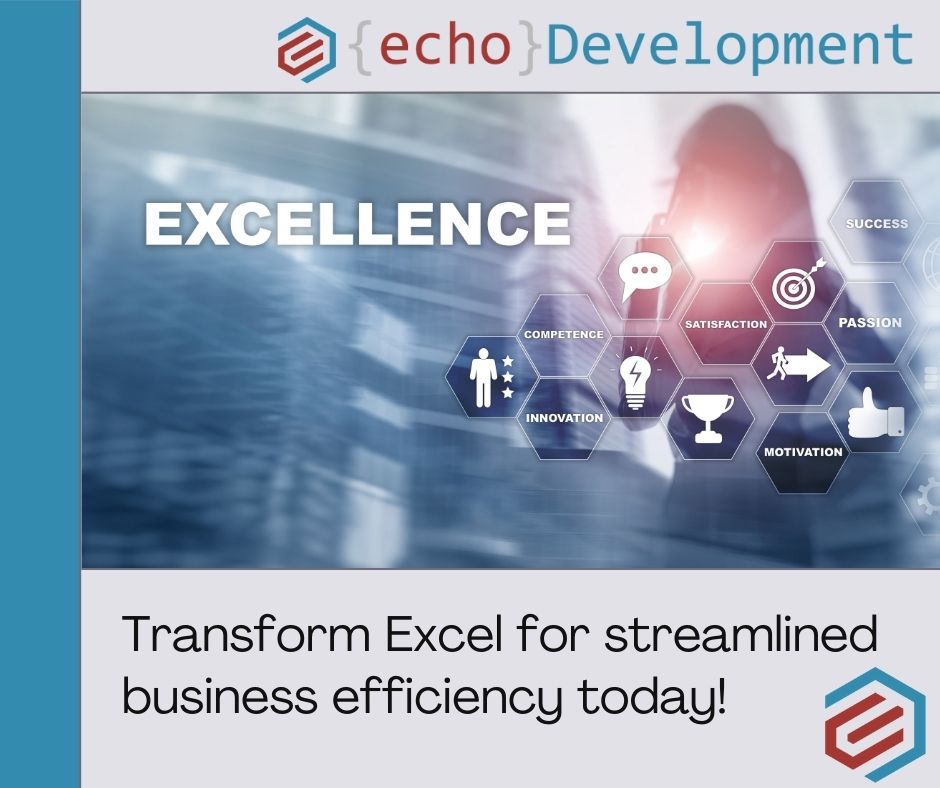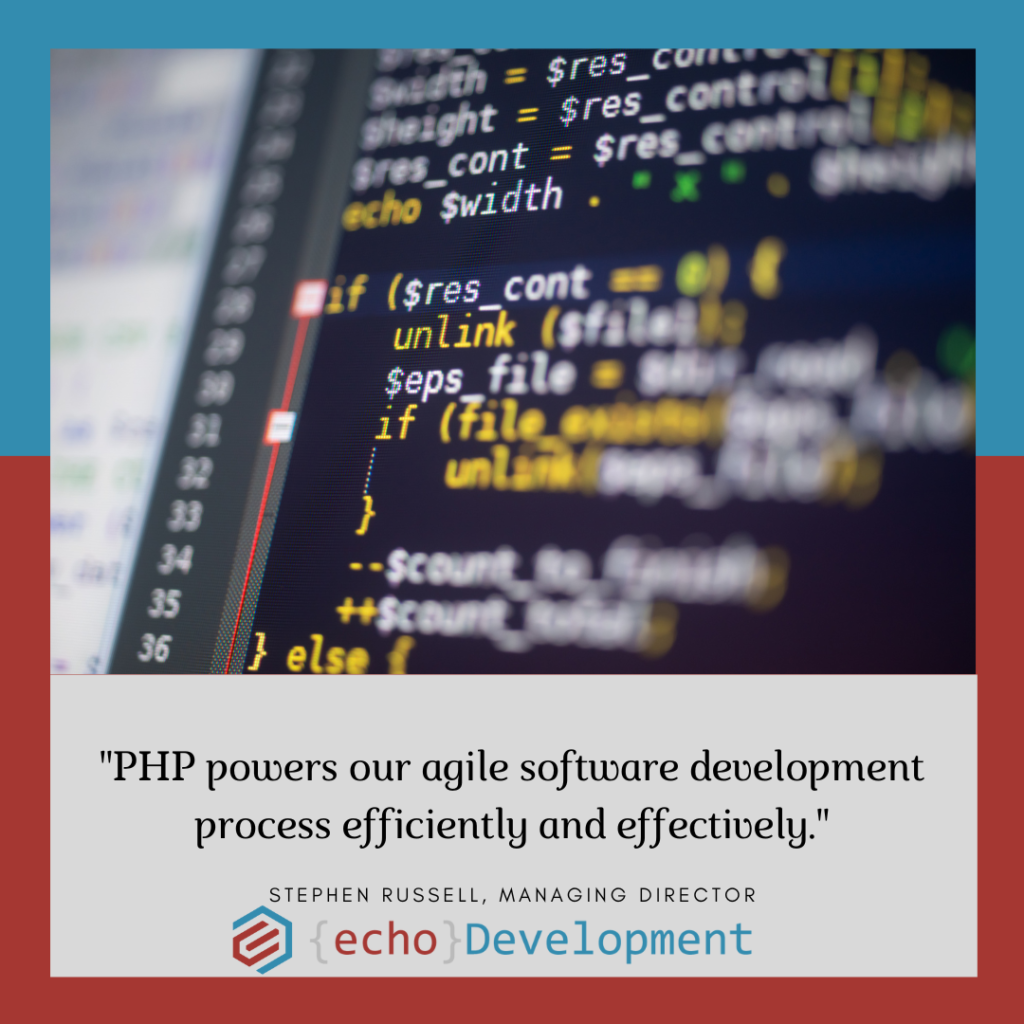In recent weeks, two major UK household names—Marks & Spencer (M&S) and the Co-operative Group (Co-op)—have found themselves in the crosshairs of cyberattacks. While exact details of these breaches are still emerging, what’s already clear is the profound ripple effect they’ve caused—not only for the businesses involved but also for millions of customers whose data may now be at risk.
At EchoDevelopment.io, we’re not here to criticise companies facing such challenges. We understand the pressure, the complexity, and the evolving threat landscape that businesses of all sizes must navigate. Instead, we want to reflect on what these events mean, show empathy to the companies impacted, and reinforce the importance of making cybersecurity a foundational part of software development.
When trusted institutions like M&S and Co-op experience data breaches, it shakes public confidence. These brands are not just retail chains—they are pillars in British society. Families, employees, and suppliers all rely on them. That’s why the emotional and practical impact of these attacks runs deep.
For customers, the anxiety is immediate: Was my personal data exposed? Could I become a victim of fraud or identity theft? And for employees, the aftermath often involves long hours, damaged reputations, and scrambling to reassure stakeholders.
We don’t downplay the scale or sensitivity of these incidents. Cyberattacks can feel like a personal violation. That’s why our first instinct is not to point fingers, but to extend support and solidarity.
These hacks serve as a stark reminder that even the most well-established organisations are not immune to cyber threats. The implications go far beyond IT systems:
If your customers don’t feel safe, they will take their business elsewhere. And in today’s digital-first world, trust is often your most valuable currency.
At EchoDevelopment.io, we work with businesses that rely on digital infrastructure to function, grow, and serve their clients. Whether we’re building bespoke software, client portals, ISO compliance systems, or cloud platforms, security is baked into every single layer.
Here’s how we take cybersecurity seriously:

Security isn’t a checklist; it’s a culture. And that culture is embedded into every project we deliver.
Many businesses, especially SMEs and certification bodies, assume they’re “too small” to be targeted. The reality is the opposite—small and mid-sized organisations are often seen as easier targets.
That’s why our approach always involves:
We empower our clients not just to protect their business, but to future-proof it.
To the teams at M&S and Co-op: we empathise. We know the toll an incident like this can take on an organisation, its leadership, and its people. We hope for a swift recovery and stronger systems in the aftermath.
To everyone else—whether you’re running a local business or managing a national body—let this be your reminder that security can’t wait. Your customers, your reputation, and your long-term survival depend on it.
If you’re unsure where your vulnerabilities lie or you know your systems need an overhaul, let’s talk.
We’ll meet you where you are—and take you where you need to be.
In our previous blog, we explored how continuous integration, automated testing, and post-deployment monitoring elevate software reliability and performance. This month, we’re taking it even further by looking at how DevOps and Quality Assurance (QA) come together to build software that’s not just functional, but continuously improving.
Quality as a Culture
In traditional models, QA was often siloed—brought in at the end of development to catch bugs. But in a DevOps-driven environment, quality is a shared responsibility. Every developer, tester, and operator plays a part in ensuring software runs smoothly from development to deployment.
At echodevelopment.io, we embed quality across the entire DevOps lifecycle. This means testing doesn’t just happen once—it’s part of every build, every change, every deployment.
Integrating QA into the DevOps Pipeline
To deliver high-quality software rapidly, we integrate testing into each stage of the CI/CD pipeline:
This approach creates a feedback loop that helps us detect, respond to, and resolve issues faster—reducing downtime and improving user satisfaction.
Tools and Technologies We Use
We leverage powerful tools to automate and enhance QA in DevOps:
These tools help us maintain code quality, reduce manual effort, and speed up delivery timelines without sacrificing reliability.
The Business Benefits
Embedding QA into DevOps pipelines results in:
Conclusion
Quality isn’t just an afterthought—it’s a continuous, collaborative effort. By combining DevOps practices with proactive QA, echodevelopment.io delivers secure, scalable, and high-performing solutions that evolve with your business needs.
Looking to embed quality into your development process? Let’s build something great together. Contact us today at echodevelopment.io.
In last month’s blog, we explored the importance of Testing and Quality Assurance (QA) in custom software development, diving into methodologies that ensure robust, secure, and high-performing software. This month, we take it a step further by focusing on continuous integration, automated testing, and post-deployment monitoring—three key elements that elevate software quality and ensure long-term success.
Continuous Integration (CI) is an essential practice in modern software development, where developers frequently integrate their code into a shared repository. With each integration, automated tests run to catch errors early, making it easier to resolve issues before they escalate. At Echo Development, we leverage CI to ensure:
By implementing CI, we streamline the testing process and ensure that all new code changes work seamlessly with existing software.
Automated testing is a game-changer when it comes to quality assurance. Rather than relying solely on manual testing, automated tests allow for quicker, more efficient validation of functionality across different environments. Some benefits include:
At Echo Development, we use tools like PHPUnit for PHP-based applications, Selenium for UI testing, and JMeter for performance testing to ensure software stability and resilience.
Software development doesn’t stop at deployment—monitoring plays a crucial role in maintaining software quality. Post-deployment monitoring includes:

By implementing proactive monitoring strategies, we minimize downtime, improve security, and enhance the user experience.
Testing and QA are ongoing processes that don’t just ensure a smooth launch but also guarantee long-term software reliability. By integrating continuous testing, automation, and post-deployment monitoring, businesses can reduce costs, improve security, and enhance user satisfaction.
Looking for expert QA solutions for your business? At Echo Development, we ensure your software remains secure, scalable, and error-free. Contact us today at echodevelopment.io and let’s build something extraordinary together.
In today’s fast-paced digital landscape, custom software development is more than just writing code—it’s about delivering high-quality, reliable, and scalable solutions that meet business needs. One of the most critical phases in this process is Testing and Quality Assurance (QA). Without a rigorous QA strategy, even the most innovative software solutions can fail due to bugs, performance issues, and security vulnerabilities.
At Echo Development, we prioritize QA at every stage of software development to ensure that our solutions not only meet but exceed client expectations. In this blog, we’ll explore the importance of testing and QA, the methodologies we use, and how businesses can benefit from a robust quality assurance strategy.
Software development is a complex process that involves multiple moving parts—from backend logic and database management to frontend design and user experience. Each of these components must work seamlessly together. Here’s why QA is an essential part of this process:
1. Enhancing Reliability and Performance
Nothing frustrates users more than buggy or slow applications. Rigorous testing ensures that all features function as expected, minimizing downtime and improving performance. We use performance testing to simulate real-world conditions, ensuring that our software scales effectively under different levels of demand.
2. Ensuring Security Compliance

Cybersecurity threats are a growing concern for businesses of all sizes. Security testing helps identify vulnerabilities before hackers can exploit them. At Echo Development, we integrate security testing into our QA process, ensuring that sensitive user data remains protected.
3. Cost-Effective Development
Fixing software defects early in the development cycle is significantly cheaper than addressing them after deployment. A well-structured QA process prevents costly post-release fixes and helps maintain customer satisfaction.
4. Delivering a Superior User Experience
A smooth, intuitive user interface is key to customer retention. Usability testing ensures that applications are user-friendly and free from functionality issues that could impact customer satisfaction.
At Echo Development, we employ a multi-layered QA strategy to guarantee software excellence. Our approach includes:
We leverage automated testing tools such as PHPUnit and Selenium to streamline the testing process. Automated testing allows us to quickly detect regressions and validate core functionalities without manual intervention, saving time and increasing efficiency.
While automation is essential, manual testing plays a crucial role in identifying issues related to usability, aesthetics, and unexpected edge cases. Our testers put themselves in the user’s shoes to ensure the software meets real-world demands.
We follow an Agile development approach, incorporating continuous testing throughout the development lifecycle. This means our software is tested iteratively, allowing us to catch and resolve issues early.
Using tools like JMeter, we simulate high user loads to measure system performance and identify potential bottlenecks. This ensures our solutions remain responsive under peak demand.
A robust QA strategy does more than just reduce defects—it enhances brand reputation, improves customer satisfaction, and increases operational efficiency. Companies investing in quality assurance experience fewer software failures, stronger security compliance, and higher ROI on their software investments.
Are you looking for a reliable partner to develop high-quality custom software tailored to your business needs? At Echo Development, we combine cutting-edge technology with a rigorous testing process to deliver robust, scalable, and secure solutions. Let’s build software that drives your business forward.
Contact us today at echodevelopment.io to discuss your project and see how our expertise in PHP and quality assurance can transform your business
In today’s fast-paced digital landscape, businesses are constantly seeking ways to improve efficiency, enhance productivity, and stay ahead of the competition. One of the most powerful tools at their disposal is artificial intelligence (AI). When integrated into bespoke software, AI can transform the way organizations operate by automating repetitive tasks, providing actionable insights, and streamlining workflows. This blog explores how incorporating AI into custom software solutions can lead to remarkable efficiencies and revolutionize business processes.
Bespoke software is designed to meet the unique needs of a specific business. Unlike off-the-shelf solutions, it offers the flexibility to include features tailored to the organization's goals. By integrating AI into such software, businesses can unlock capabilities that were previously out of reach, including predictive analytics, natural language processing, and machine learning-driven automation.
AI integration goes beyond providing tools—it becomes a decision-making partner, enhancing the value of the software. Here are some key areas where AI drives efficiencies:
For instance, a retail business could use AI to analyse purchasing data and predict which products are likely to be in high demand during specific seasons, enabling smarter inventory management.
By integrating automation into bespoke software, businesses can significantly reduce errors and improve productivity.
These enhancements create a seamless customer journey, leading to increased engagement and loyalty.
One of the most significant advantages of integrating AI into bespoke software is the ability to automate complex workflows. Automation not only eliminates human error but also speeds up processes that would otherwise take days or weeks. Below are some real-world applications:

Integrating AI into bespoke software isn’t just a technological upgrade—it’s an investment in the future. Businesses that adopt AI see significant returns on investment (ROI) through:
While the benefits of AI integration are substantial, businesses should be aware of potential challenges:
As AI technology continues to evolve, the possibilities for its integration into bespoke software are expanding. Future trends include:
AI integration in bespoke software is not just a technological advancement—it’s a strategic necessity for businesses aiming to stay competitive. By automating repetitive tasks, enhancing customer experiences, and providing actionable insights, AI-powered software drives efficiency and unlocks new opportunities for growth. While the journey may require an initial investment and thoughtful planning, the long-term benefits make it a worthwhile endeavour.
As businesses look to the future, embracing AI in their bespoke software solutions will be key to achieving greater productivity, agility, and innovation. At echodevelopment.io, we’re here to help you harness the power of AI to transform your operations and elevate your business.
Transform Your Business in 2025
As the calendar flips to a new year, it’s a natural time for reflection and planning. For business owners, January isn’t just about personal resolutions—it’s about looking at your operations with fresh eyes and asking, what can we do better?
Maybe 2024 was filled with growth, but you struggled to keep up with the paperwork. Perhaps you’ve been relying on old systems that no longer fit your business needs. Whatever the case, the New Year is a perfect moment to consider the possibilities of streamlined processes, better organization, and smarter systems.
At echodevelopment.io, we specialize in helping businesses like yours embrace change—not just for the sake of modernization, but to create real, meaningful improvements in your day-to-day operations. Our focus is on building secure, custom digital systems that empower you to work smarter, not harder.
Let’s explore why 2025 could be the year to leave old habits behind and step into a more efficient future.
The Struggle of Outdated Systems
We’ve all been there—piles of paperwork that seem to multiply overnight, or a spreadsheet that takes an eternity to update. While these tools may have worked when you were just starting out, they can quickly become obstacles as your business grows.
Outdated systems often lead to:
But it doesn’t have to be this way. Imagine having a centralized system where everything just works. No more juggling spreadsheets. No more paper trails. Just smooth, efficient workflows tailored to your business needs.
Why the New Year is the Perfect Time for Change
There’s something powerful about a clean slate. The New Year invites us to take stock of where we are and where we want to go. For businesses, it’s the ideal time to assess what’s working—and what isn’t.
Ask yourself:
If your answers reveal room for improvement, you’re not alone. Many business owners find themselves in the same position, which is why so many make January their month for taking action.
The Benefits of Going Digital
Switching to a digital system doesn’t just mean eliminating paper—it’s about creating a smarter, more resilient foundation for your business. Here’s how going digital with echodevelopment.io can make a difference:
What We Do at echodevelopment.io
Every business is unique, which is why off-the-shelf solutions often fall short. That’s where we come in. At echodevelopment.io, we build custom software designed around your specific needs.
Here’s how we work:
Whether it’s transitioning from spreadsheets to an all-in-one platform, ensuring compliance with industry standards, or simply giving you better control over your operations, we’re here to make it happen.
A Real-World Example

Take one of our recent clients, a mid-sized manufacturing company. They were drowning in paperwork—production schedules, inventory logs, compliance reports—spread across dozens of disconnected files and systems.
We built them a centralized platform that automated their most tedious tasks and provided real-time insights into their operations. The result? They saved countless hours every week, improved accuracy, and were able to focus on scaling their business.
Stories like this remind us why we do what we do: helping businesses find more time for what truly matters.
How to Get Started
Making a change can feel daunting, but you don’t have to do it alone. At echodevelopment.io, we guide you through the process, breaking it down into manageable steps.
Your New Beginning Awaits
The New Year isn’t just a date on the calendar—it’s a chance to set new intentions and take meaningful steps toward a brighter future. If outdated systems have been holding you back, let’s make 2025 the year you say goodbye to inefficiency and hello to smarter, simpler workflows.
Ready to get started? Visit echodevelopment.io to learn more or reach out to schedule a free consultation. Let’s make this your best year yet!
For many businesses, Excel is a go-to tool for tracking data, managing finances, and organizing information. It’s flexible, familiar, and great for handling small-scale tasks. However, as a business grows, so do its data management needs—and that’s where Excel starts to show its limits. What once worked efficiently can become cumbersome, time-consuming, and error-prone. When your operations demand more precision, scalability, and automation, transitioning from Excel spreadsheets to a comprehensive, custom-built system can be a game-changer.
In this post, we’ll explore how converting Excel spreadsheets into a robust business system can enhance productivity, improve data accuracy, and scale with your growing business needs.
Excel is a powerful tool, but it has its limitations, especially when businesses rely on it as their primary data management system. Here are some common challenges businesses face as they outgrow Excel:

To address these challenges and support business growth, it may be time to convert those Excel spreadsheets into a custom-built, scalable business system.
Transitioning from Excel to a custom system opens the door to a wide range of benefits:
Moving from Excel to a robust business system involves several key steps to ensure the solution meets your unique needs and integrates seamlessly into your workflows:
1. Needs Assessment
The first step is to assess how your business currently uses Excel and where it falls short. This involves understanding the types of data you manage, the processes you follow, and the specific pain points you experience with Excel. Analysing these areas helps define the essential requirements for a new system.
2. System Design
With a clear understanding of your needs, we can begin designing a custom solution. This includes deciding on essential features like data input controls, automation workflows, reporting tools, and access permissions. The design phase ensures that the new system aligns with your current processes while providing room for future growth.
3. Development and Integration
Our development team builds your system using robust technologies that prioritize performance, scalability, and security. The system is then integrated into your existing workflows and connected with other software tools you use, such as CRM or ERP systems, to create a unified business environment.
4. Testing and Training
Before launching the new system, we conduct thorough testing to ensure it meets your business requirements and functions smoothly. Training sessions are provided for your team to ensure they feel comfortable and confident using the new system from day one.
5. Continuous Improvement
Even after implementation, the work doesn’t stop. Continuous support and updates keep the system aligned with changing business needs, industry regulations, and technological advancements.
One of our clients, an ISO management company, relied heavily on Excel to track client audits and manage compliance documentation. As their client base grew, so did the complexity of managing audit schedules, client records, and certification progress. Staff members spent countless hours manually updating spreadsheets, often facing issues with data inconsistencies, missed audit deadlines, and difficulty accessing real-time information.
To address these challenges, we helped them transition to a custom-built audit management system tailored specifically for their needs. The new system allowed them to track audit schedules in real time, automate client notifications, and centralize all compliance documentation for easy access and secure storage. With features like automated alerts for upcoming audits and a comprehensive dashboard, the ISO management company gained complete visibility over their audit operations.
The impact was significant: they saw a massive reduction in time spent on manual updates, minimized errors, and achieved better compliance oversight. With the new system, their team could now focus more on client relationships and strategic improvements rather than being bogged down by data management. The improved accuracy and efficiency of their processes also helped them enhance client satisfaction and take on new clients with ease.
Excel is an incredible tool, but it’s not built to handle the demands of a growing business. Transforming your Excel spreadsheets into a scalable, custom-built system can help your business achieve greater accuracy, efficiency, and control over its operations. At Echodevelopment.io, we specialize in building custom systems that adapt to your business needs, empowering you to focus on innovation and growth.
Ready to take the next step? Let’s discuss how we can help turn your spreadsheets into a powerful, scalable tool for success.
In today’s fast-paced business environment, efficiency is key. Yet, many businesses still rely on manual, paper-based systems to manage vital processes. While these methods may have worked in the past, they can become a bottleneck in modern operations, leading to inefficiencies, errors, and unnecessary delays. Enter bespoke PHP software solutions — a game-changer that is transforming how businesses manage their day-to-day tasks, from data entry to compliance management.
At Echodevelopment.io, we specialize in creating tailored PHP software solutions that address the unique needs of businesses, helping them move from outdated manual systems to automated, streamlined processes. This shift from paperwork to precision can significantly impact the speed, accuracy, and security of business operations.
Businesses often rely on paper documents or spreadsheets to manage operations like invoicing, tracking customer information, or even scheduling. However, these methods come with a host of limitations:
These challenges are not just an inconvenience—they can directly impact a business’s bottom line. Delays in processing, difficulty in tracking data, and the constant risk of error all lead to reduced efficiency, higher costs, and potential reputational damage.
Custom PHP software solutions offer businesses a way out of the inefficiencies of manual systems. By transitioning to automated, digital processes, businesses can eliminate the risks and frustrations of paperwork, replacing them with systems that offer increased precision, speed, and security. Here's how:
1. Precision Through Automation
Custom PHP software automates repetitive tasks, such as data entry, invoicing, and record keeping. Automation ensures that information is processed accurately and consistently, significantly reducing the risk of human error. Additionally, automated validation checks can be implemented to ensure that data entered into the system meets specific criteria, further improving accuracy.
2. Speed and Efficiency
Manual processes take time—not only to complete tasks but also to correct errors. With PHP software, businesses can streamline workflows, allowing tasks that once took hours to be completed in minutes. For instance, generating reports, managing client communications, or processing orders can be automated, freeing up employees to focus on more strategic work.
3. Scalability
As businesses grow, so do their operational needs. Custom PHP solutions are built to scale with your business, adapting to increased workloads without compromising performance. This means that businesses can handle larger volumes of data, clients, and operations without needing to constantly overhaul their systems.

4. Security and Data Protection
In an era of increasing cybersecurity threats, protecting sensitive business information is a top priority. Custom PHP software allows businesses to implement strong security measures, such as data encryption, role-based access controls, and secure data storage, ensuring that sensitive information remains protected at all times.
5. Real-Time Insights
One of the most significant advantages of transitioning from paper-based systems to PHP software is the ability to access real-time data. With manual systems, reports and insights can take days or weeks to compile. PHP software, however, allows businesses to generate reports instantly, providing immediate insights into operational performance, financial data, and more. This enables faster, more informed decision-making.
Let’s consider the example of a growing manufacturing company. Previously reliant on spreadsheets to track inventory, production schedules, and customer orders, they found themselves struggling with inaccuracies and delays. As their business grew, the inefficiencies of manual data management started to have a tangible impact on customer satisfaction and profitability.
By partnering with Echodevelopment.io, they transitioned to a custom PHP-based inventory management system. This system automated the tracking of raw materials, production progress, and order fulfilment. The result? Inventory errors were reduced by 90%, production schedules were optimized in real-time, and customer orders were processed faster than ever before. With fewer errors and faster workflows, the company improved its profitability and customer satisfaction, while also scaling effortlessly.
While there are many off-the-shelf solutions available, they often fail to meet the unique requirements of individual businesses. Every organization has its own workflows, challenges, and goals, and a one-size-fits-all approach is rarely effective. Bespoke PHP software, on the other hand, is tailored to fit the specific needs of a business, ensuring that it not only solves existing problems but also enhances overall operational efficiency.
At Echodevelopment.io, we specialize in designing and developing PHP software solutions that are customized to meet the unique challenges of each client. Whether you need to automate a single process or overhaul your entire business system, we’re here to help you achieve precision, speed, and security.
Moving from paperwork to precision is more than just a technological upgrade—it’s a fundamental shift in how businesses operate. With bespoke PHP software, businesses can streamline operations, reduce errors, improve security, and scale efficiently, all while gaining access to real-time insights that drive smarter decision-making.
If your business is ready to leave behind the inefficiencies of manual processes, contact us at Echodevelopment.io. We’re here to help you design a custom solution that empowers your business and positions you for future success.
In the world of business, Excel is often the go-to tool for managing data, creating budgets, tracking projects, and much more. Its flexibility and ease of use make it a staple in many organizations. However, as businesses grow, their needs become more complex, and the limitations of Excel become apparent. This is where transforming Excel spreadsheets into comprehensive, scalable business systems can make a significant difference.
Excel is incredibly powerful for small-scale tasks, but as data grows in volume and complexity, it can become cumbersome. Multiple users might struggle with version control, data integrity can be compromised, and processes may become inefficient due to the manual nature of Excel. These challenges often lead to errors, lost productivity, and ultimately, missed opportunities.
Transforming Excel spreadsheets into robust business systems allows companies to overcome these limitations. By converting manual processes into automated systems, businesses can scale efficiently, reduce errors, and improve overall productivity. Custom software solutions tailored to your specific needs can integrate with other enterprise tools, ensuring seamless workflows and accurate data management.

1. Assessment of Current Needs: The first step is understanding how your organization currently uses Excel and identifying pain points. This includes recognizing where data management becomes inefficient or prone to errors.
2. Designing a Custom Solution: Based on the assessment, a custom solution is designed to meet your specific business needs. This could involve creating a centralized database, automating data entry, and ensuring that the system scales with your business growth.
3. Development and Integration: The next phase is the development of the custom software. This solution is then integrated into your existing infrastructure, ensuring it works seamlessly with other tools and processes.
4. Training and Implementation: Transitioning from Excel to a new system requires training for your team. A well-planned implementation ensures minimal disruption and helps your team quickly adapt to the new system.
5. Continuous Improvement: Even after implementation, continuous monitoring and updates are essential to keep the system aligned with your evolving business needs.
• Scalability: As your business grows, the system can easily accommodate increased data and users without sacrificing performance.
• Data Integrity: Centralized data management reduces the risk of errors and ensures that everyone is working with the same, up-to-date information.
• Efficiency: Automation of repetitive tasks frees up your team to focus on more strategic work, enhancing overall productivity.
• Customization: The system is tailored to your specific business processes, ensuring it meets your exact requirements.
Conclusion
While Excel is a fantastic tool, it has its limits. As your business expands, so should your tools. Transforming your Excel spreadsheets into a custom, scalable system can significantly enhance your business’s productivity and accuracy, allowing you to focus on growth and innovation. At Echodelvelopment.io, we specialize in creating bespoke solutions that help businesses transition smoothly from Excel to enterprise-grade systems, ensuring they remain competitive in an ever-changing market.
At echoDevelopment.io, we are committed to delivering high-quality software solutions that meet the evolving needs of our clients. One of the key methodologies we employ to achieve this is Agile software development, a flexible and iterative approach that promotes collaboration, customer feedback, and continuous improvement. Central to our Agile development processes is the use of PHP, a powerful and versatile programming language that aligns perfectly with the principles of Agile. In this blog, we'll provide an overview of how we utilize PHP to enhance our Agile development practices and deliver exceptional bespoke software.
Why PHP and Agile Are a Perfect Match
PHP, known for its simplicity, flexibility, and extensive ecosystem, is an ideal choice for Agile software development. The language's ease of use and rapid development capabilities allow our team to quickly implement features, iterate on feedback, and adapt to changing requirements. PHP's extensive library of frameworks and tools further accelerates development, enabling us to build robust, scalable, and maintainable applications efficiently.
1. Customer Collaboration Over Contract Negotiation
In Agile development, customer collaboration is paramount. We engage closely with our clients throughout the development process, ensuring their needs and expectations are consistently met. PHP's flexibility allows us to make adjustments and improvements based on client feedback without significant delays, fostering a more collaborative and responsive development environment.

2. Responding to Change Over Following a Plan
Agile development embraces change, recognizing that requirements can evolve over time. PHP's dynamic nature allows us to adapt our codebase quickly and efficiently, responding to new insights and shifting priorities. This adaptability ensures that the final product is closely aligned with the client's vision, even as that vision evolves.
3. Working Software Over Comprehensive Documentation
While documentation is important, Agile prioritizes the delivery of working software. PHP's straightforward syntax and readability contribute to faster development cycles, allowing us to deliver functional software at regular intervals. This focus on tangible progress ensures that our clients can see and interact with their software throughout the development process, providing valuable feedback that informs subsequent iterations.
4. Individuals and Interactions Over Processes and Tools
Agile emphasizes the importance of people and interactions. At EchoDevelopment.io, our team of skilled PHP developers collaborates closely, leveraging each other's strengths and expertise. PHP's versatility and extensive community support facilitate seamless communication and knowledge sharing, enhancing our team's ability to solve complex problems and deliver high-quality software.
1. Iterative Development
We break down the development process into manageable iterations, each lasting a few weeks. During each iteration, we focus on delivering a specific set of features or improvements. PHP's rapid development capabilities enable us to build, test, and deploy new features quickly, ensuring continuous progress and early delivery of value to our clients.
2. Continuous Integration and Continuous Deployment (CI/CD)
To maintain the momentum of Agile development, we implement CI/CD pipelines. PHP's compatibility with various CI/CD tools allows us to automate the testing, integration, and deployment processes. This automation ensures that new code is regularly integrated into the main codebase, reducing the risk of conflicts and enabling faster delivery of updates.
3. Automated Testing
Quality is a top priority at EchoDevelopment.io. We utilize PHP's robust testing frameworks, such as PHPUnit, to implement automated tests that validate the functionality and performance of our code. Automated testing ensures that our software remains reliable and bug-free, even as new features are added and changes are made.
4. Frequent Client Demos and Feedback Sessions
Throughout the development process, we conduct regular demos and feedback sessions with our clients. PHP's rapid development capabilities allow us to present functional software at each demo, providing clients with a tangible representation of progress. This frequent feedback loop enables us to make informed decisions and prioritize features that deliver the most value.
At echoDevelopment.io, we harness the power of PHP to enhance our Agile software development processes. By leveraging PHP's flexibility, simplicity, and extensive ecosystem, we deliver high-quality bespoke software that meets the dynamic needs of our clients. Our Agile approach, characterized by customer collaboration, adaptability, and continuous improvement, ensures that we consistently exceed client expectations and deliver exceptional software solutions.
Whether you're looking to build a new application or enhance an existing one, EchoDevelopment.io is here to help. Contact us today to learn more about our bespoke software development services and how we can turn your vision into reality.